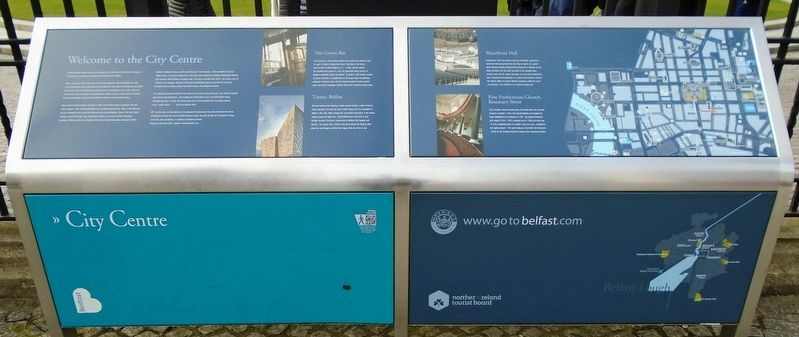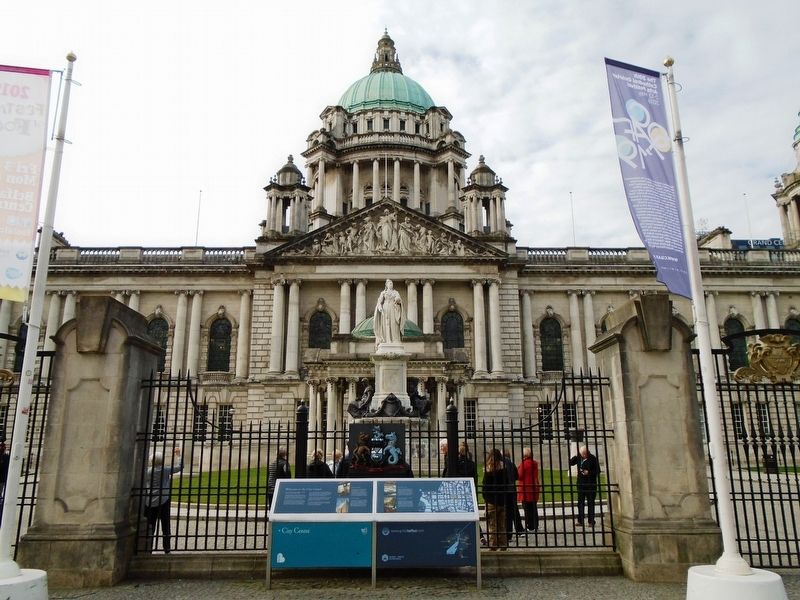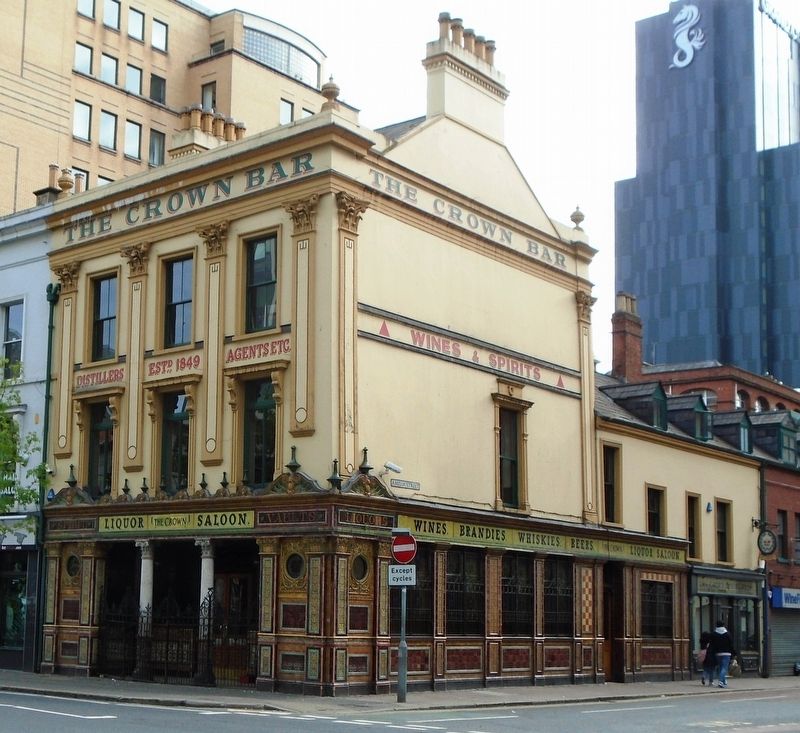Welcome to the City Centre
City Centre
Belfast has been shaped by time and circumstance. Its buildings tell the story of change and development, of commerce and industry, entertainment and religion.
Belfast city centre is the vibrant heart of a thriving metropolis, which has shifted over time. In the seventeenth century High Street was the epicenter, with ships coming right into the middle of the town. Where the City Hall now stands were once formal gardens for a castle. When the town built its own linen market in competition with Dublin, it became a place of fine merchants’ houses, becoming the commercial centre from the middle of the nineteenth century.
Queen Victoria granted Belfast city status in 1888. Proud citizens built a magnificent City Hall which opened in 1906, reflecting Belfast’s power, prosperity and prestige. Today, it still represents not just nineteenth century glory but continued pride and achievement. Some of the city’s finest buildings surround City Hall, many connected to finance, such as the Scottish Temperance Institution (1902) and the Ocean Building of the Ocean Accident Guarantee Corporation (1902).
Belfast’s nineteenth century growth was fuelled by its linen industry – which exceeded that of any whole country – as well as funding some of the city’s most magnificent buildings. Shipbuilding followed, with Harland & Wolff
building the largest ships in the world, including RMS Titanic. This success was not confined to one company: Workman & Clark was internationally important and both firms built on foundations laid by William Ritchie, Thompson & Kirwan, and McIlwaine & McColl.It is refreshing to discover that life in the city was not all hard work and industry. Our forebears certainly knew how to enjoy themselves. Exotic palaces of entertainment such as the Grand Opera House, the Ulster Hall and, of course, the famous Crown Bar, show that Belfast folk have always enjoyed music, comedy, drama . . . . . and the occasional drink.
The Crown Bar
The Crown Bar on Great Victoria Street, now owned by the National Trust, is a gem in Belfast’s architectural crown! Described by the former Poet Laureate, Sir John Betjeman, as “. . a many coloured cavern”, this priceless time capsule is a rare and remarkably intact survivor of Belfast’s nineteenth century gin palaces. Its opulent 1885 interior, created by Italian craftsmen, is magnificently set off by gas lights and gleaming brasswork. Customers never fail to be impressed with its ornate stained glass, and plaster mouldings, detailed tilework and intricately carved snugs.
Titanic Belfast
This awe-inspiring new building in Titanic Quarter delivers a state-of-the-art visitor experience that
Waterfront Hall
Completed in 1997, the opening ceremony for Belfast’s magnificent Waterfront Hall was performed by the Prince of Wales. The concert which followed included performances by Dame Kiri Te Kanawa and the Ulster Orchestra. The city takes real pride in this splendid, glass fronted venue, with its copper clad dome, one of its true architectural stars. Recognised internationally as a concert and conference venue of the highest caliber, it remains Belfast’s showpiece auditorium and is an expression of its confidence as a modern European city.
First Presbyterian Church, Rosemary Street
This is Belfast’s oldest surviving place of worship within the old town boundary. Founded in 1644, the present building was designed by Roger Mulholland and completed in 1783. The famous Methodist, John Wesley (1703 – 1791), preached here in 1789 and wrote that “It is the completest place of worship I have
Erected by Belfast City Council and Northern Ireland Tourist Board.
Topics. This historical marker is listed in these topic lists: Architecture • Churches & Religion • Industry & Commerce • Man-Made Features. A significant historical year for this entry is 1888.
Location. 54° 35.827′ N, 5° 55.807′ W. Marker is in Belfast, Northern Ireland. Marker is at the intersection of Donegall Square North (Northern Ireland Route A1) and Donegall Place, on the right when traveling east on Donegall Square North. Touch for map. Marker is at or near this postal address: Donegall Square North, Belfast, Northern Ireland BT1 5GS, United Kingdom. Touch for directions.
Other nearby markers. At least 8 other markers are within walking distance of this marker. James Joseph Magennis (a few steps from this marker); Belfast City Hall (a few steps from this marker); First U.S.A.E.F. Landed in This City 26 Jan 1942 (a few steps from this marker); Donegall Square North (a few steps from this marker); Donegall Place (within shouting distance of this marker); William James Pirrie (within shouting distance of this marker); Sir Daniel Dixon Bart [Baronet] (within shouting distance of this marker); Titanic Memorial Garden (within shouting distance of this marker). Touch for a list and map of all markers in Belfast.
Also see . . . Visit Belfast. (Submitted on May 14, 2019, by William Fischer, Jr. of Scranton, Pennsylvania.)
Credits. This page was last revised on May 14, 2019. It was originally submitted on May 14, 2019, by William Fischer, Jr. of Scranton, Pennsylvania. This page has been viewed 117 times since then and 12 times this year. Photos: 1, 2. submitted on May 14, 2019, by William Fischer, Jr. of Scranton, Pennsylvania. 3. submitted on May 13, 2019, by William Fischer, Jr. of Scranton, Pennsylvania.


